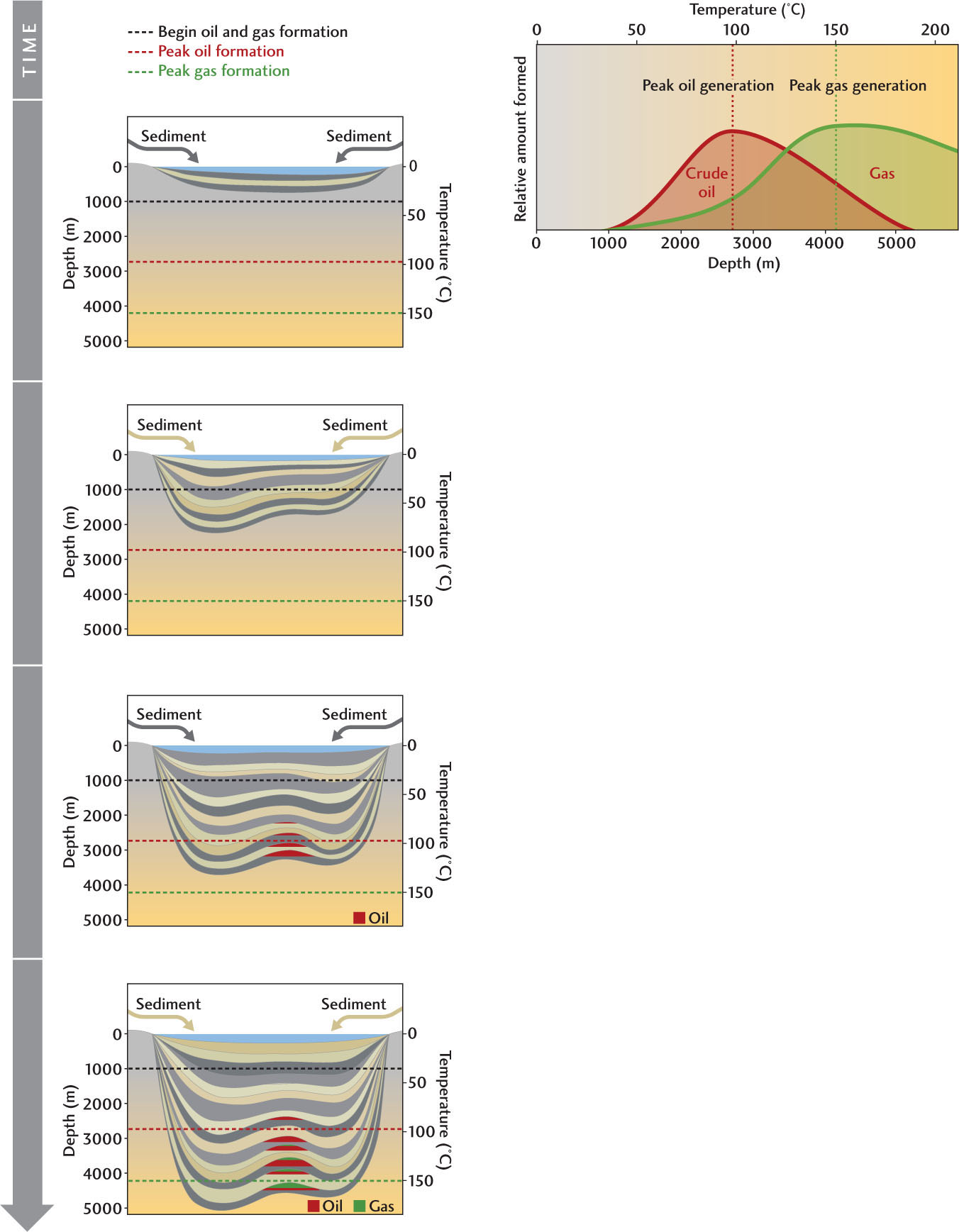Practicing Geology Exercise
Where Do We Look for Oil and Gas?
The search for new deposits of oil and natural gas is taking on ever greater urgency as fuel supplies dwindle and geopolitical issues make nations eager to produce their own energy supplies. The search for these deposits must be guided by an understanding of how and where oil and gas form.
The first step in exploring for oil and gas is a search for sedimentary rocks formed from sediments that are likely to have been rich in organic matter. Once such rocks have been located, the next step is to determine how deeply they have been buried and the maximum temperature they might have achieved. These factors determine the prospectivity of the rocks—their likelihood of containing oil or gas.
Many fine-grained sediments and sedimentary rocks, such as shale, contain organic matter. Subsidence of sedimentary basins, coupled with deposition of overlying sedimentary layers, may result in deep burial of these organic-rich sediments. As they are buried progressively deeper, the sediments become increasingly hotter. The rate at which temperatures increase with depth is called the geothermal gradient (see Chapter 6).
Depending on the geothermal gradient in the sedimentary basin, organic-rich sedimentary rocks may eventually become hot enough that the organic matter they contain is transformed into oil or gas. That process of transformation (described in more detail in Chapter 23) is known as maturation. Maturation begins shortly after the sediments are deposited, but increases dramatically above 50°C. Oil is generated as the sediments are heated to temperatures between 60°C and 150°C. At higher temperatures, the oil becomes unstable and breaks down, or “cracks,” to form natural gas.
Geologists have discovered organic-rich shales in the Rocknest basin, which has a geothermal gradient of 35°C/km. The accompanying diagram shows the relationship between depth of burial, temperature, and the relative amounts of oil and gas formed in shales in this sedimentary basin. Assuming that peak oil generation occurs at about 100°C, calculate the depth at which peak oil generation would occur in the Rocknest basin.

146

If the organic-rich shales in the Rocknest basin were buried to depths of 2850 m or greater, then one might expect to find oil in the basin. However, if the depth of burial were shallower than 2850 m, then the prospectivity of the basin would be downgraded.
BONUS PROBLEM: The depth of peak gas generation in the Rocknest basin is 3575 m. Rearrange the equation above and solve for the temperature at which gas generation would peak.